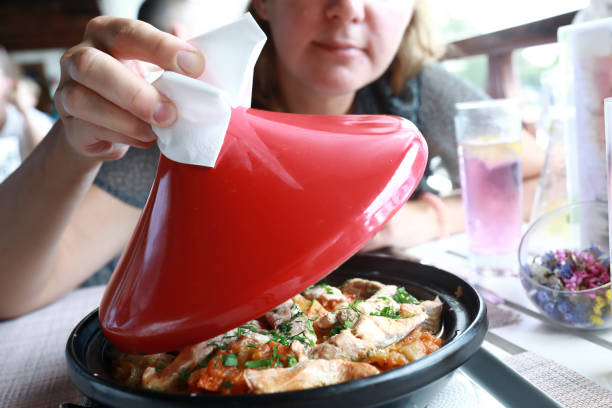For those who cherish cooking, owning a tagine pot is both a joy and a responsibility. To ensure your beloved clay pot lasts for years and continues to deliver delicious, authentic flavors, understanding the secrets of cleaning and maintaining it is essential. This article dives deep into the art of caring for your tagine pot, ensuring it remains a treasured part of your kitchen arsenal.

What is a Tagine Pot?
A tagine pot is a traditional cooking vessel from North Africa, particularly Morocco, designed to prepare flavorful, slow-cooked stews. With its conical lid, it allows steam to circulate, keeping the food moist and rich in flavor. Clay or ceramic, sometimes with intricate patterns, these pots are not only functional but also visually appealing.
The Importance of Proper Cleaning
Maintaining the integrity of your tagine pot is crucial. Its made of porous material, which means it can absorb flavors and retain moisture. Improper cleaning can lead to unwanted odors, shortened lifespan, and affect the flavor of your dishes. Here, we emphasize why a meticulous cleaning routine is essential.
Cleaning Before the First Use
Before using your tagine pot for the first time, it requires a special cleaning process:
- Rinse thoroughly to remove any dust from manufacturing.
- Submerge in water for an hour to allow the clay to absorb moisture.
- Dry completely and coat with olive oil, inside and out, to season it.
Everyday Cleaning Tips
After cooking, it’s tempting to rush the cleaning process. However, patience and care ensure longevity:
- Allow the tagine to cool before washing to prevent thermal shock.
- Wash gently with warm, soapy water using a soft sponge. Avoid harsh scrubbers.
- Ensure thorough drying to prevent mold and mildew.
Removing Stubborn Stains
Stubborn stains are inevitable but manageable:
- Create a paste from baking soda and water to scrub lightly.
- For deeper stains, fill with warm water and a few spoons of baking soda, let it sit overnight.
Seasoning Your Tagine
Once in a while, your tagine needs seasoning to restore its cooking surface:
- Coat lightly with olive oil, then bake in the oven at 300F for about 2 hours.
- Let it cool slowly inside the oven.
Emerging Issues and DIY Solutions
Cracks and Breakage
Cracks often occur due to sudden temperature changes. Heres how you can manage:
- For minor cracks, mix flour and water to create a paste and apply it to the cracked area.
- If a major crack appears, it might be time for a new pot.
Preventative Care
To avoid damage, practice these habits:
- Use a heat diffuser on stovetops.
- Avoid metallic utensils that can scratch the inner surface.
- Store in a cool, dry place to keep it moisture-free.
Storing Your Tagine Pot
Proper storage is vital for preserving your tagine’s condition:
- Store in a ventilated area to avoid moisture build-up.
- Keep the lid slightly ajar to ensure air circulation.
Restoring a Neglected Tagine
Even if your tagine has seen better days, all is not lost:
- Soak in water and vinegar solution overnight to refresh.
- Repeat the seasoning process to reestablish its natural non-stick surface.

Supplementary Tips
Learn more interesting ways to maintain your kitchenware in the [burger press price comparison](https://howtocleancastiron.com/burger-press-price-comparison-find-the-best-value/, ‘dofollow’).
Frequently Asked Questions About Tagine Pots
Looking for additional information? Here are some quick answers:
- Can I clean my tagine in a dishwasher? It’s best to hand wash to preserve the pots finish.
- How often should I season my tagine? Every few months or when you notice food starting to stick.
- Is a cracked tagine still usable? Minor cracks can often be repaired, but use caution.
To dive deeper into authentic recipes for your tagine, visit this collection of [Moroccan Tajine recipes](https://marocmama.com/moroccan-tajine-recipes/, ‘nofollow,’) or explore this [guide on tagine usage](https://www.masterclass.com/articles/how-to-use-a-moroccan-tagine/, ‘nofollow,’).
Embrace the art of maintaining your tagine pot and enhance your culinary adventures. Happy cooking!
This article contains affiliate links. We may earn a commission at no extra cost to you.

